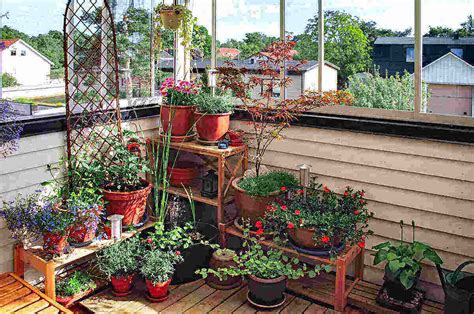Maximizing Your Balcony Garden: A Guide to Growing Edible Flowers
Edible flowers have been used in culinary arts for centuries, offering not only beauty but unique flavors to a variety of dishes. If you have a balcony garden, incorporating edible flowers into your urban gardening can bring vibrant colors and fragrant blooms, while providing the opportunity to elevate your cooking. In this article, we’ll explore how to successfully grow and use edible flowers, focusing on plant selection, gardening techniques, and creative culinary uses for your harvest.
Introduction
Growing edible flowers in a balcony garden is a delightful fusion of aesthetics and utility. Whether you’re new to balcony gardening or a seasoned gardener looking to diversify your plant selection, edible flowers add both visual appeal and culinary value to your garden. In small spaces like balconies, maximizing every inch is crucial, and edible flowers thrive in compact environments. This guide will help you navigate through plant selection, container gardening techniques, and creative cooking ideas to make the most of your urban garden.
Key Concepts
- Balcony Gardening: The practice of growing plants in limited space, often in containers, on a balcony or small outdoor area.
- Edible Flowers: Flowers that are safe to eat, adding unique flavors and textures to dishes.
- Container Gardening: Growing plants in containers rather than directly in the ground, ideal for limited spaces.
- Culinary Uses: The application of edible flowers in cooking, often for garnishing, infusing flavors, or enhancing the aesthetics of food.
Historical Context
Edible flowers have been utilized in cuisine since ancient times. The Romans, Chinese, and Greeks all incorporated blossoms like violets, roses, and chrysanthemums into their diets for both flavor and medicinal properties. With the rise of modern urban living, the tradition of growing edible flowers has shifted into balcony and container gardening, making these beautiful plants more accessible to city dwellers. Historically, edible flowers were also seen as a symbol of luxury, adorning banquet tables and royal feasts, a trend that has continued into today’s creative cooking.
Current State Analysis
Today, urban gardening has surged in popularity, driven by environmental concerns, limited space, and a growing desire for sustainable living. Balcony gardens are especially favored by apartment dwellers in cities where traditional gardening space is limited. Edible flowers are ideal for balcony gardening due to their compact size, dual-purpose nature, and relatively easy cultivation. However, there are challenges to overcome, such as climate control, space constraints, and plant care in a confined area. Fortunately, advancements in container gardening and compact plant varieties have made it easier than ever to succeed with an edible flower garden on your balcony.
Practical Applications
The most exciting part of growing edible flowers is the variety of ways they can be used in your daily life. Below are several practical applications for your blooms:
- Culinary Uses: Use your flowers to decorate cakes, salads, or infused oils. For example, nasturtiums have a peppery flavor that works well in salads, while violets can sweeten desserts.
- Infused Water: Add flowers like lavender or rose petals to water for a refreshing, aromatic drink.
- Herbal Teas: Dried flowers such as chamomile and hibiscus can be brewed into soothing herbal teas.
- Floral Syrups: Edible flowers can be transformed into syrups for cocktails, desserts, or as a unique sweetener.
- Pressed Flower Art: If you have an overflow of blooms, pressing flowers to create decorative art pieces is another practical way to enjoy your harvest.
Case Studies
| Flower Type | Growing Conditions | Culinary Use | Challenges | Solutions |
|---|---|---|---|---|
| Nasturtium | Full Sun, Moderate Water | Salads, Garnishes | Prone to aphids | Introduce natural predators like ladybugs |
| Viola | Partial Sun, Moist Soil | Desserts, Salads | Delicate petals prone to wilting | Provide shade during hot afternoons |
| Lavender | Full Sun, Well-Drained Soil | Herbal Teas, Infused Oils | Overwatering | Ensure pots have proper drainage |
Stakeholder Analysis
Growing edible flowers in a balcony garden involves several key stakeholders:
- Urban Gardeners: Benefit from the aesthetic and culinary value of edible flowers.
- Environmentalists: Support urban gardening as it contributes to local ecosystems and sustainability.
- Chefs and Food Enthusiasts: Utilize edible flowers for creative cooking and presentation.
- Local Communities: May benefit from shared knowledge and resources in urban gardening networks.
Implementation Guidelines
To successfully grow edible flowers in your balcony garden, follow these guidelines:
- Container Selection: Choose containers with adequate drainage and size for the plant’s root system.
- Soil Quality: Use nutrient-rich soil with good moisture retention properties.
- Plant Placement: Ensure your balcony receives adequate sunlight and that plants are placed where they can thrive.
- Watering Schedule: Edible flowers vary in their water needs; research each plant’s specific requirements to avoid over or underwatering.
- Pest Management: Use organic methods such as neem oil or introducing beneficial insects to protect plants from pests.
Ethical Considerations
As urban gardens grow in popularity, ethical concerns surrounding the use of resources and biodiversity arise. Consider the following when cultivating your edible flower garden:
- Water Use: In water-scarce regions, avoid overwatering and use water-efficient techniques such as drip irrigation.
- Pollinator Support: Grow flowers that attract pollinators, such as bees and butterflies, to support urban ecosystems.
- Organic Practices: Avoid synthetic fertilizers and pesticides, which can harm local wildlife and reduce soil quality.
Limitations and Future Research
While balcony gardening offers numerous benefits, it also has limitations:
- Space Constraints: Not all plants thrive in small containers or limited sunlight, limiting your plant selection.
- Climate Control: Extreme weather conditions, such as heatwaves or cold snaps, may require additional interventions such as shading or bringing plants indoors.
- Pest Issues: Urban environments can have a higher prevalence of pests, requiring diligent pest control.
Future research could explore advanced container gardening techniques, such as vertical gardening or hydroponics, to maximize space use and sustainability. There is also a growing interest in the development of edible flower varieties bred specifically for urban environments, which could further enhance the feasibility of growing these plants in balcony gardens.
Expert Commentary
The rising interest in urban gardening and sustainability has spurred innovation in edible flower cultivation. Experts believe that balcony gardens can help mitigate food deserts in urban areas by providing an accessible way to grow nutrient-rich, edible plants. Additionally, the culinary world continues to explore the potential of edible flowers in creative cooking, offering both aesthetic and flavor enhancements to traditional dishes. As more people turn to container gardening, the importance of research in sustainable growing practices, climate adaptability, and ethical considerations will only grow, helping to secure a brighter future for urban gardens.


